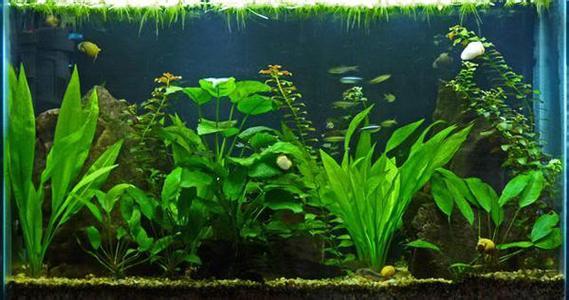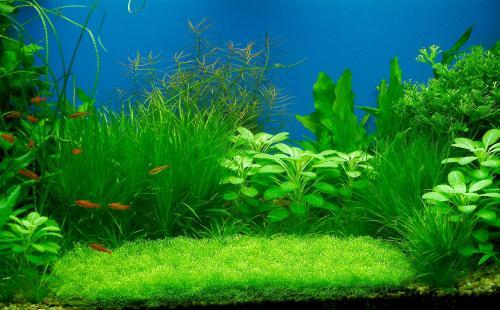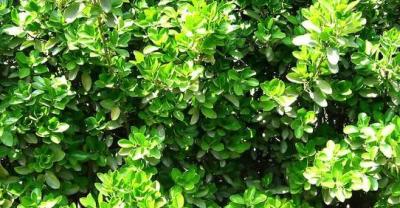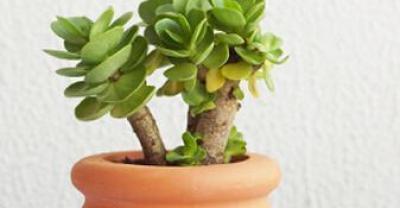Ecological Disease Prevention and Culture techniques of floating Grass bed in Freshwater Pond



In order to control the occurrence of diseases, save water resources, improve the comprehensive three-dimensional and efficient utilization of ponds, and promote the development of healthy aquaculture, we have achieved remarkable results in ecological disease prevention by using floating grass beds in freshwater ponds in recent years. The culture technique is mainly suitable for monoculture and mixed culture ponds such as soft-shelled turtle, Loach, carp, crucian carp and Penaeus vannamei. Not suitable for grass carp, crayfish, hairy crab culture ponds. The culture techniques and methods are introduced as follows:
Pond condition
Culture ponds are divided into solar greenhouse and natural ecological ponds, the area should not be too large (greenhouse generally 500m2 ~ 1500 square meters, natural ponds generally less than 5 mu), in order to facilitate aquaculture management and fishing. The pond for breeding soft-shelled turtle in the Yellow River Estuary should be surrounded by an anti-escape wall (about 0.5 m high) and a bait platform. The anti-escape wall is made of 60 cm (or 80 cm) tiles buried 20 cm around the pond, and the four corners of the pond are curved to prevent the soft-shelled turtle from escaping. An anti-escape net should be built around the Loach culture pond (about 0.5 meters in the water bank). The anti-escape net is made of 10-20 mesh cloth, buried 50 cm, supported by 1.5-meter bamboo poles or cement rods, and the net cloth on the water surface has a space of more than 50 cm) to prevent Loach from burrowing and escaping. About 15 days before stocking, the pond should be cleared first. The pond should be cleaned by dry method and sprinkled with 75 kg of quicklime per mu or 10 kg of bleaching powder.
Water source and fertile water
The water source of aquaculture is underground well water, which has good water quality and no pollution. Spring water temperature is low, the early water intake should not be too deep, generally about 0.5 meters, and then with the rise of water temperature, gradually deepen the water level. The main purpose of fertilization is to reproduce the organisms in the water, for the seedlings to feed and grow in the pond, and it is not necessary to apply fertilizer in the pond where the large size soft-shelled turtle seedlings are released. The fertilizers are divided into organic fertilizer, inorganic fertilizer and biological fertilizer.
Seedling selection and stocking
When selecting seedlings (species), the general principle is to select robust individuals with strong vitality, neat specifications, disease-free and injury-free, and the stocking specifications should be determined according to their respective needs. The larvae of soft-shelled turtle in the Yellow River Estuary should be stocked with more than 50 grams per fish according to the needs of culture, and the seedlings of Loach should be stocked with seedlings of more than 4 centimeters. The stocking time depends on the local temperature and the suitable temperature of each culture breed. The fry must be disinfected before entering the pond in order to kill the pathogenic bacteria and parasites carried by the fish. This is an important link in the prevention and treatment of fish diseases. Disinfection drugs include brine 3%-5% soaking for 10-15 minutes, potassium permanganate 10ppm for 10-20 minutes, and povidone iodine 10ppm for 10 minutes. The stocking density varies according to the seedling specification and design yield, generally 4 ~ 5 seedlings per square meter, 2 ~ 3 seedlings per square meter in 250g/, and 50 000 ~ 60 000 seedlings in 4 cm ~ 5 cm in Misgurnus anguillicaudatus. At the same time, in order to make full use of the pond space to adopt the pond diversified culture model, the general main culture species accounted for 70%-80%, and the mixed culture varieties accounted for 20%-30%.
Construction of floating grass bed
1. Floating grass bed water plant varieties: water hyacinth, water cabbage, bamboo leaf vegetable.
two。 Floating grass bed function: during the growth of aquatic organisms, a large amount of organic matter will be produced due to the death of residual bait, excreta and aquatic animals and plants, and a large number of toxic and harmful substances such as ammonia nitrogen and hydrogen sulfide will be produced by oxidation and decomposition of organic matter, which will pollute the aquaculture water body and cause harm to the growth of aquatic organisms so as to cause diseases. Through the construction of floating grass bed on water, the growth and reproduction of aquatic plants on grass bed will absorb organic matter, ammonia nitrogen, hydrogen sulfide and other harmful substances in pond culture water environment through roots, which can purify and optimize the culture water environment, reduce the discharge of waste water and the occurrence of aquatic biological diseases, and achieve healthy and clean production.
3. Construction of floating grass beds for water hyacinth and water cabbage: a frame is made with bamboo poles at the four corners, one end or inside of the pond, fixed around, and the area accounts for 1% of the culture water body. 1 inch 1 month March, after May, water hyacinth and water cabbage are transplanted into the pond (introduced in greenhouse in April) Water hyacinth and water cabbage absorb organic matter in water and ammonia nitrogen, hydrogen sulfide and other harmful substances produced by oxidation and decomposition of organic matter in the framework to grow and propagate to form grass beds, which play a role in purifying water quality and preventing diseases.
4. Construction of floating grass bed of bamboo leafy cabbage: bamboo leafy vegetable is also known as hollow cabbage, Chinese cabbage, rattan vegetable, scientific name water spinach, annual or perennial herb. Rich in vitamins and mineral salts, it is a very important vegetable in summer and autumn. The cultivation of hollow cabbage in the cultivation carrier on the bamboo floating bed realized the healthy growth of both bamboo leaf vegetable and fish, which not only made full use of water space and resources, realized the recycling of matter and energy, and improved the benefit. At the same time, the growth of bamboo leaf vegetable absorbed ammonia nitrogen, hydrogen sulfide and organic matter in water, purified water quality, and provided excellent shade environment and growth environment for aquatic organisms.
Phyllostachys pubescens is mainly used on land to germinate and raise seedlings and transplant into floating beds in ponds.
(1) raising seedlings of Phyllostachys pubescens.
Soil preparation: choose land for raising seedlings, first turn the soil and flatten it. An earth dam 40 cm to 50 cm high is built around the leveled land for irrigation. Planing about 10 cm deep, 15 cm ~ 20 cm wide furrow, the distance between the two ditches is about 15 cm, apply sufficient base fertilizer, the base fertilizer can be pig manure, chicken manure and other organic fertilizer, can also be compound fertilizer. Mature organic fertilizer: 500kg ~ 1000 kg / mu. Compound fertilizer: about 50 kg / mu.
Sowing: dry the seeds before sowing, find a good flat ground, cover the seeds with plastic sheet, spread the seeds on it, and bask them in the sun for 5 ~ 6 hours, which can improve the germination rate of the seeds. But when drying the seeds, turn over the sun every 1 hour.
When sowing, sprinkle the sun-dried seeds evenly in the ditch. After sowing, you can apply a layer of carbendazim (wettable powder) on the seeds to prevent diseases and insect pests in the soil. Then cover the soil, cover a thin layer of soil slightly with a hoe, no more than 2cm, and flatten the trench. Water, water thoroughly.
Seedling management: the temperature of bamboo leafy vegetables in the seedling stage is generally between 15 ℃ ~ 45 ℃, watering once a day, each time watering thoroughly, and seedlings will grow in about 5 days. When the seedlings grow to about 10 centimeters, they are not only watered but irrigated. Mainly because of its "like water" characteristics. Do not apply fertilizer at the seedling stage, but ensure the water demand of the seedlings. At the same time, there is no need for seedlings.
(2) floating bed making.
Generally use bamboo or PVC pipe to make a floating bed, according to the length and width of the pool, cut the PVC pipe into a section of 3m ~ 5m long and 0.5m wide, plug both ends with a cap, then tie the PVC into a rectangular frame, and then tie the small plastic pipe in accordance with the distance of about 20cm, with nylon tie or clip fixed on the PVC pipe rack, or with the mesh fixed on the rectangular frame made of PVC, a floating bed made of PVC is done. PVC pipes can also be made of bamboo or other materials. When the floating bed is made, it is fixed on the water surface. Then transplant the seedlings into the floating bed at a certain distance.
(3) Seedling transplanting.
When the seedlings grow to 20 cm ~ 25 cm, they can be transplanted to a floating bed, and the day before transplanting, fill the land for raising seedlings with water. When pulled out of the land in this way, because the soil is moist, it will not hurt the roots of the seedlings. Wash the soil from the roots of the seedlings with clean water so as not to bring bacteria from the soil to the water. If the seedlings pulled out are not transplanted in time, they can be placed in a pot filled with water and stored temporarily. The height of the water is just above the root, so it can be kept fresh for 7 days.
Planting on water: just insert the seedling root into a small plastic pipe, and only one seedling is planted in each plastic pipe. The planting area of bamboo leafy vegetables accounts for about 5% of the area of the pond. The area is too large, and bamboo leafy vegetables grow fast. If they are not harvested in time, the lighting of the pond will be affected.
(4) growth and harvest.
Bamboo leafy vegetables grow on the surface of the pond and absorb organic matter in the water without fertilization. After about 25 days, the seedlings of bamboo leafy vegetables transplanted to a floating bed can grow to a height of 50 cm ~ 60 cm. At this time, they can be harvested without any tools. You just need to cut it off from the second diameter node above the water by hand. When harvested, as long as it does not damage the roots of bamboo leaves, it generally will not affect the later growth.
Culture management
1. Bait feeding. The feeding of bait adheres to the principle of "four determinations", that is, "quality, quantity, timing and orientation". The feeding method changes according to the living habits of the farmed species.
Quality determination. The bait should be palatable and fond of food. The soft-shelled turtle feed in the Yellow River Estuary should be fed with a special feed for soft-shelled turtle. Loach feed uses special formula feed. The protein content of formula feed must meet the nutritional requirements of aquatic organisms at different growth stages, and the appropriate particle size should be mastered according to the fish body specifications.
Quantitative. The daily feeding amount in the seedling stage should account for 5%-8% of the fish body weight, and the daily feeding amount in the adult fish stage should account for 2%-3% of the fish body weight; the daily feeding amount should increase with the increase of fish weight. The daily feed is divided into 2 ~ 3 times (2 times for soft-shelled turtle and 3 times for Loach), and the optimum amount of food for each feeding should be about 80% of the full amount.
Timing. The time of bait every day should be relatively fixed, choose the time of day with high dissolved oxygen, such as 8: 9 a.m. and 3: 4 p.m., and avoid the high temperature at noon.
Location. The feeding should have a fixed position, and the Yellow River Estuary soft-shelled turtle should set up a bait platform with asbestos tiles or porcelain plates on the sunny side of the pond. There are two feeding methods for the Yellow River Estuary soft-shelled turtle: one is to put the soft-shelled turtle compound feed into a cake on the feed table (water feeding); the other is to make the soft-shelled turtle compound feed into particles and feed it to the underwater feeding table (this method is suitable for cultivating Yellow River estuary turtle fry in the greenhouse with hardened bottom). Misgurnus anguillicaudatus has a sensitive sense of smell and is easy to form a conditioned reflex, so it can be fed at a fixed point in a pond.
2. Water quality management. In the process of breeding, in addition to purifying water with floating beds of aquatic plants, according to the water quality and management, the water quality can also be adjusted by the following methods. First, add new water at the right time. In the production process, due to water evaporation and a small amount of leakage, timely injection of new water according to the situation. The second is to use an aerator. Conditional ponds can use aquaculture machines to cause water convection, increase dissolved oxygen and emit toxic substances in the water. The third is the use of beneficial microbial preparations. Beneficial microorganisms, such as photosynthetic bacteria, Bacillus, EM, etc., are harmless to human beings and animals, and can effectively use organic pollutants in water as their own source of nutrition, and rapidly purify water quality with the help of photosynthesis; enhance the immunity of aquatic organisms and prevent diseases; can promote the growth and reproduction of zooplankton and make the water quality fat without pollution.
3. Disease prevention and treatment. Disease prevention and control in the process of aquaculture follows the principle of "giving priority to prevention and comprehensive prevention". Disease prevention runs through the whole process of production, including clearing ponds, disinfecting seedlings with drugs before stocking, optimizing the water environment by using floating grass bed organisms and microecological agents, etc. At the same time, we should do a good job in breeding and management, pond patrol and disinfection of breeding appliances.
- Prev

The Marine Elf Nemo Family-- A complete Collection of the Culture of "Clownfish"
Clown fish is a common name for the fishes of the subfamily Sparidae, which is a kind of tropical saltwater fish. It is known that there are 28 species, one of which is from Premnas.
- Next

Related data of feed culture experiment of black water gadfly larvae
(1) study on the application of black water gadfly larvae in pig feed 1. Study on the application of black water gadfly larva in fattening pig feed; dried black water gadfly larva powder can be used.
Related
- On the eggshell is a badge full of pride. British Poultry Egg Market and Consumer observation
- British study: 72% of Britons are willing to buy native eggs raised by insects
- Guidelines for friendly egg production revised the increase of space in chicken sheds can not be forced to change feathers and lay eggs.
- Risk of delay in customs clearance Australia suspends lobster exports to China
- Pig semen-the Vector of virus Transmission (4)
- Pig semen-the Vector of virus Transmission (3)
- Five common causes of difficult control of classical swine fever in clinic and their countermeasures
- Foot-and-mouth disease is the most effective way to prevent it!
- PED is the number one killer of piglets and has to be guarded against in autumn and winter.
- What is "yellow fat pig"? Have you ever heard the pig collector talk about "yellow fat pig"?

